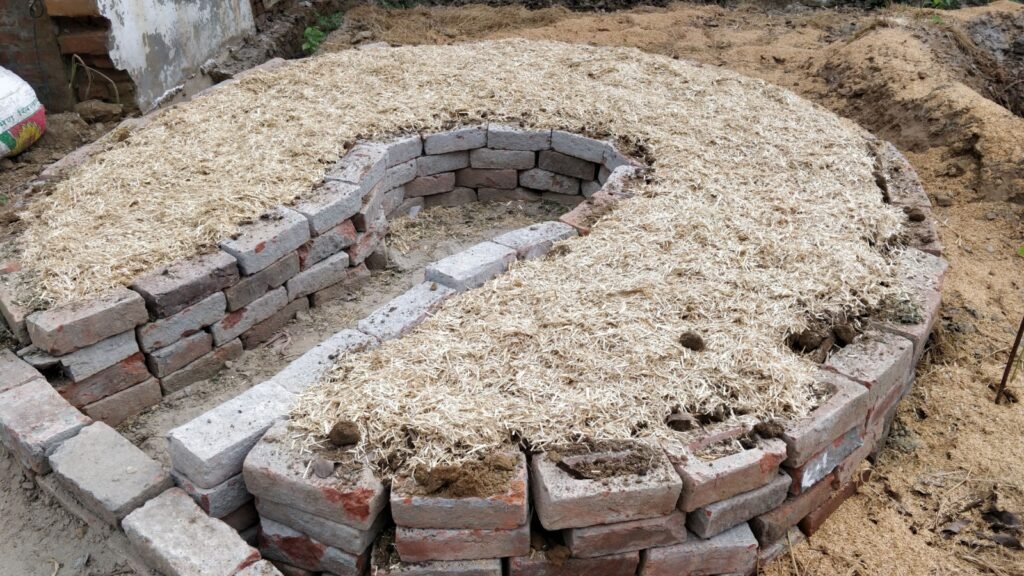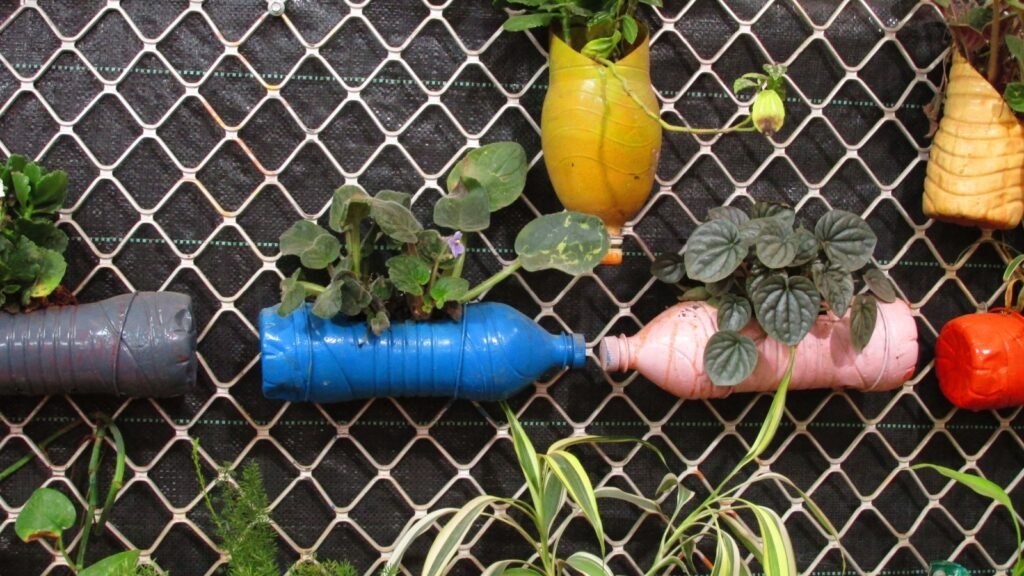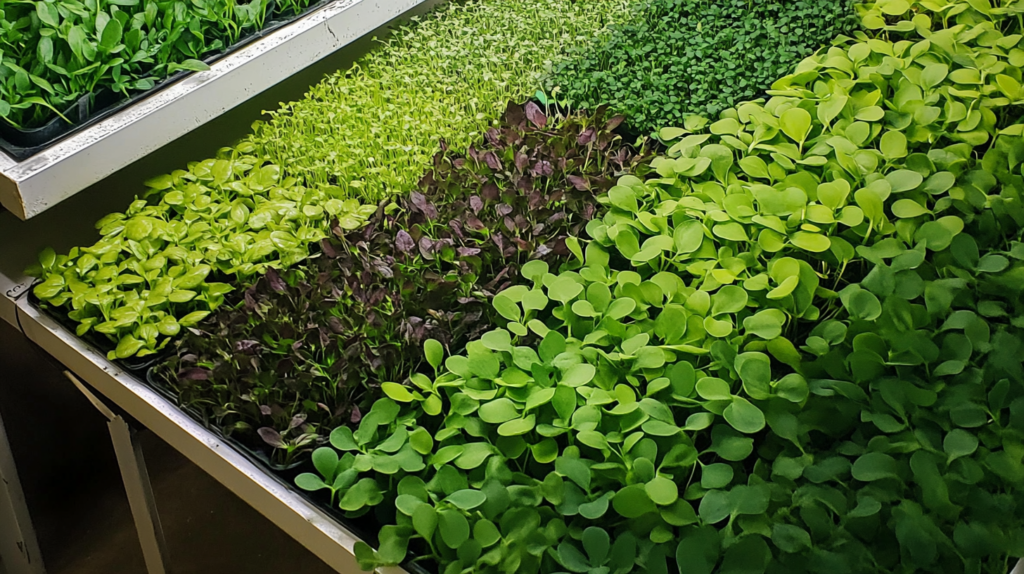Space is precious, especially when you’re trying to grow enough food to feed your family. But here’s the thing: you don’t need acres of land to produce a bountiful harvest. With some clever tricks and a bit of know-how, you can turn even the tiniest plot into a food-producing powerhouse. I’ve spent years experimenting with different methods to maximize yields in small spaces, and I’m excited to share my top 15 hacks with you. These aren’t just theoretical ideas – they’re battle-tested techniques that have helped me grow more food than I ever thought possible from a small space.
Yes, I am lucky enough to have plenty of space to grow food now, but in a survival scenario where I’m forced to leave my home long-term and essentially start over, I like to know I have the knowledge and the skills to start a bountiful survival garden, even in a small space..
Vertical Gardening with Pallets

Transform old wooden pallets into space-saving vertical gardens. Stand a pallet upright, staple landscape fabric to the back and bottom, then fill with soil. Plant herbs, lettuce, or strawberries in the spaces between slats. One pallet can hold up to 20 plants, dramatically increasing your growing area. Remember to use heat-treated pallets (marked with ‘HT’) to avoid chemical contamination. For added productivity, install a drip irrigation system along the top of the pallet to ensure even watering with minimal effort.
Keyhole Garden Beds

Keyhole gardens are circular raised beds with a compost bin in the center, resembling a keyhole from above. This design allows you to reach all plants without stepping on the bed, maximizing growing space. The central compost bin continuously feeds the surrounding plants, boosting yields. A 6-foot diameter keyhole garden can produce as much as a 12-foot row in a traditional garden. To further increase efficiency, line the bottom of the bed with cardboard to suppress weeds and retain moisture.
Intensive Square Foot Gardening

Divide your garden into 1-foot squares, planting a different crop in each. This method allows you to grow up to 16 times more in the same space as traditional row gardening. Use a grid system to keep track of plant spacing. For example, plant one tomato per square foot, but 16 carrots or radishes. Implement crop rotation within your squares to maintain soil health and prevent pest build-up.
Three Sisters Companion Planting

The Native American “Three Sisters” method interplants corn, beans, and squash. Corn provides a natural trellis for beans, beans fix nitrogen in the soil, and squash shades the ground, retaining moisture and suppressing weeds. This symbiotic relationship allows you to grow three crops in the space of one, increasing overall yield by up to 20%. For best results, plant corn when it’s 4 inches tall, followed by pole beans a week later, and squash a week after that.
Grow Bags for Potatoes

Use fabric grow bags to cultivate potatoes in small spaces. As the plants grow, add more soil, encouraging the development of additional tubers along the buried stem. A 10-gallon grow bag can yield up to 10 pounds of potatoes. The bags are portable, allowing you to move them to maximize sunlight exposure. To prevent soil compaction and improve drainage, mix in about 30% perlite with your potting soil.
Espaliered Fruit Trees

Train fruit trees to grow flat against a wall or fence using the espalier technique. This method allows you to grow full-sized fruit trees in a fraction of the space. An espaliered apple tree can produce up to 30 pounds of fruit while taking up just 10 square feet of space. Plus, the warmth from the wall can extend your growing season. Choose dwarf or semi-dwarf rootstocks for easier management and quicker fruit production.
Hydroponic Window Gardens

Set up a simple hydroponic system in a sunny window to grow leafy greens and herbs year-round. A basic deep water culture system can produce a head of lettuce every 30 days in just one square foot of space. No soil means no mess and fewer pests, perfect for indoor growing. Add an air stone to your reservoir to increase oxygen levels in the water, promoting faster growth and healthier roots.
Straw Bale Gardening

Condition straw bales with nitrogen-rich fertilizer, then plant directly into them. Each bale becomes a self-contained raised bed, perfect for small spaces or poor soil. A single straw bale can support two tomato plants, four pepper plants, or up to 8 lettuce plants. As the bale decomposes, it provides nutrients to your plants. Cover the bales with black plastic for a few weeks before planting to speed up the conditioning process and warm the bales for early planting.
Vertical Gutter Gardens

Mount rain gutters on a sunny wall to create tiered planting spaces. This method is ideal for shallow-rooted crops like lettuce, spinach, and herbs. A 10-foot gutter can hold up to 40 lettuce plants. Ensure proper drainage by drilling holes every few inches along the bottom of the gutter. Paint the gutters a dark color to absorb heat and extend your growing season in cooler climates.
Trellised Vine Crops

Grow vining plants like cucumbers, melons, and squash vertically on trellises. This technique can triple your yield per square foot compared to letting them sprawl on the ground. A single cucumber plant on a trellis can produce up to 30 cucumbers in just 2 square feet of ground space. Use soft ties or plant clips to gently secure the vines to the trellis as they grow, preventing wind damage.
Container Fruit Trees

Dwarf fruit trees thrive in large containers, making them perfect for small spaces. A 15-gallon container can support a tree that produces up to 20 pounds of fruit annually. Choose self-pollinating varieties if you only have room for one tree. Remember to repot every 3-4 years to maintain health and productivity. Mulch the top of the container with compost to retain moisture and slowly feed the tree.
Hanging Bottle Gardens

Recycle plastic bottles into hanging planters for herbs and small vegetables. Cut a hole in the side, fill with soil, and hang horizontally. A 2-liter bottle can support 2-3 herb plants or a single pepper plant. This method is great for maximizing vertical space on fences or balconies. Paint the outside of clear bottles to prevent algae growth and protect plant roots from excess sunlight.
Aquaponics Systems

Combine fish farming with hydroponic gardening in an aquaponics setup. Fish waste fertilizes the plants, while plants filter the water for the fish. A small 100-gallon system can support 20 fish and produce up to 150 pounds of vegetables annually. It’s a self-sustaining ecosystem that maximizes productivity in minimal space. Consider adding red worms to your grow beds to break down solid waste and further enrich the system.
Succession Planting

Maximize your harvest by planting crops in stages throughout the season. As soon as one crop is harvested, replace it with another. For example, follow spring peas with summer beans, then fall spinach. This technique can increase your overall yield by up to 200% compared to single-season planting. Keep a garden journal to track planting dates and yields, helping you refine your succession plan each year.
Microgreens Indoor Farm

Grow nutrient-dense microgreens indoors year-round. These tiny powerhouses are ready to harvest in just 7-14 days. A single 10×20 inch tray can produce 4-5 ounces of microgreens weekly. That’s enough to boost the nutrition of 20 meals, all from a space smaller than a laptop. Experiment with different seed mixes to create your own unique blends of flavors and nutrients.

